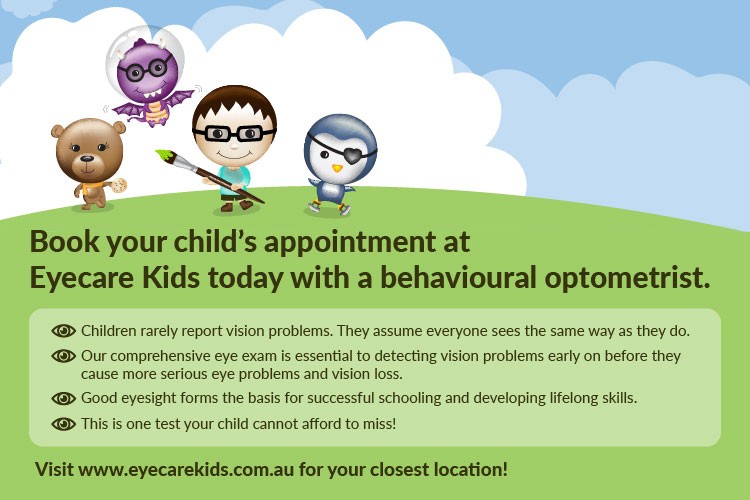“I first noticed a problem with Anastasia’s vision when she was two, with one eye turning out every once in a while”, explained Luidmila, Anastasia’s mum. “We went to a couple of eye specialists but neither was able to help – even glasses made no difference. Then a few months ago Anastasia told me that she could see two of me – that’s when I became more worried, particularly about her school work suffering. I was ready to try anything so when SooJin Nam, a behavioural optometrist Eyecare Kids, suggested vision therapy, we gave it a go.”
Anastasia was diagnosed with convergence insufficiency – an eye teaming problem which showed up as double vision every once in a while. She often found she saw double in the mornings and when she was reading – a very confusing and disconcerting experience for a child. To combat the double vision, Anastasia would cover one eye, but of course that wasn’t a long-term solution.
Anastasia underwent vision therapy for a few weeks, completing eye focusing and teaming tasks for 20 minutes every morning and visiting a vision therapist once a week. Anastasia’s double vision decreased almost immediately and after several weeks she didn’t see double anymore! “Vision therapy was fun”, says Anastasia. “I still do some of the tasks at home sometimes – I especially like the ones where I have to focus on the smiley faces and the one with the coloured balls on the string. I wish I could go back to do the exercises again!”
Luidmila described how she was given a pair of glasses that mimicked Anastasia’s condition so she could experience the vision therapy too. “I’d never heard of vision therapy before but the whole experience was excellent. The activities were fun and Anastasia enjoyed doing them but most importantly her school work has improved and she is much happier. I used to have to sit and help her read, pointing to each word as she would constantly lose her place. Now she can read on her own, her handwriting has improved dramatically and she is concentrating much better in class. I would thoroughly recommend vision therapy and Eyecare Kids is a wonderful place – the staff are so good with kids. There are few things more important than your child’s vision and their education – it’s truly an investment in their future.” Thanks to the vision therapy, Anastasia can now see clearly without discomfort both close up and into the distance.
Undetected vision problems are estimated to affect approximately one in five Australian children which may contribute to potential learning difficulties in reading, writing, viewing a whiteboard, computer use and other classroom activities. A review undertaken as part of the National Children’s Vision Screening Project reported most children with academic or behavioural problems fail one or more visual tests.
Behavioural optometrist, SooJin Nam, commented, “Vision therapy can help children with tracking, focusing and teaming problems as well as lazy and turned eye which are common visual problems in children. It involves teaching the patient to consciously become aware of how they are using their eyes through a series of therapy activities which we have available at our practices. It’s a little like teaching someone how to ride a bike or learn how to play the piano, we teach them to learn how to use their eyes more efficiently. We have designed our practices around the needs of children ensuring each consultation can be completed in a fun, interactive and educational way for children from two years old.”
SooJin adds, “Vision therapy isn’t suitable for everyone so we encourage parents to speak to one of our vision experts. Our optometrists can provide a full eye exam and suggest the best course of management for the child’s eye condition.”
Optometrists Australia recommends that children have a full eye examination with an optometrist before starting school and at least every two years thereafter. Eye examinations usually attract a Medicare rebate and no referral is required.

